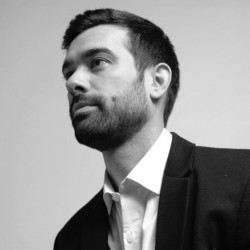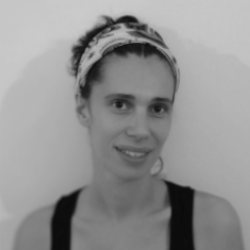Architecture today is a multidisciplinary knowledge platform, combining input from engineering, the humanities, and the environmental, cognitive and social sciences. Technological advancements in artificial intelligence, machine learning and physiological sensing are radically affecting the entire world of architecture and can foster and enhance the creative process of architects. By engaging architects, engineers, scientists and artists in a broad exploration of these technologies, it is time to expand the design capabilities of architects, transform the attributes of architectural and urban, physical or virtual designed environments; while respecting human needs and sensitivities and promoting a new, more inclusive agenda for human life and experience. How can the dialogue between art, science and technology lead to a design process that makes our habitat (cities and nature) more inclusive, innovative, and creative? In this session, we have invited artists, architects and researchers on AI from the STARTS H2020 MindSpaces project to present their exploration with these technologies and their creative practice at the intersection of artificial intelligence, machine learning, architecture and design. Program Keynote: AI technologies for Art & Design. The MindSpaces paradigm, Stefanos Vrochidis (GR) Senior Researcher (Grade C’) with CERTH-ITI and the Head of the Multimodal Data Fusion and Analytics Group. Speakers: Refik Anadol (TR/US), media artist, director, and pioneer in the aesthetics of machine intelligence; Maurice Benayoun (HK/FR), French pioneer, contemporary new-media artist, curator and theorist, based in Paris and Hong Kong; Tyson Hosmer (UK), Associate Researcher at Zaha Hadid Architects, leading grant-funded research development of cognitive agent-based technologies and machine learning for generative design; Anastasios Tellios (GR), Professor of Architectural Design: Theory and Practice at the School of Architecture, AUTH. Moderator: Nefeli Georgakopoulou (GR), Senior Research Associate with CERTH-ITI, architect and media artist.
 Refik Anadol (TR/US): is a media artist, director, and pioneer in the aesthetics of machine intelligence. His body of work locates creativity at the intersection of humans and machines. In taking the data that flows around us as his primary material and the neural network of a computerized mind as his collaborator, Anadol paints with a thinking brush, offering us radical visualizations of our digitized memories and expanding the possibilities of architecture, narrative, and the body in motion. Anadol’s site-specific parametric data sculptures, live audio/visual performances, and immersive installations take many forms, while encouraging us to rethink our engagement with the physical world, its temporal and spatial dimensions, and the creative potential of machines.
Refik Anadol (TR/US): is a media artist, director, and pioneer in the aesthetics of machine intelligence. His body of work locates creativity at the intersection of humans and machines. In taking the data that flows around us as his primary material and the neural network of a computerized mind as his collaborator, Anadol paints with a thinking brush, offering us radical visualizations of our digitized memories and expanding the possibilities of architecture, narrative, and the body in motion. Anadol’s site-specific parametric data sculptures, live audio/visual performances, and immersive installations take many forms, while encouraging us to rethink our engagement with the physical world, its temporal and spatial dimensions, and the creative potential of machines. Maurice Benayoun (HK/FR): (aka MoBen or 莫奔,born 29 March 1957 in Mascara, Algeria) is a French pioneer, contemporary new-media artist, curator and theorist based in Paris and Hong Kong. His work employs various media, including (and often combining) video, computer graphics, immersive virtual reality, the Internet, performance, EEG, 3D printing, large-scale urban media art installations and interactive exhibitions. Often conceptual, Maurice Benayoun’s work constitutes a critical investigation of the mutations in contemporary society induced by emerging or recently adopted technologies.
Maurice Benayoun (HK/FR): (aka MoBen or 莫奔,born 29 March 1957 in Mascara, Algeria) is a French pioneer, contemporary new-media artist, curator and theorist based in Paris and Hong Kong. His work employs various media, including (and often combining) video, computer graphics, immersive virtual reality, the Internet, performance, EEG, 3D printing, large-scale urban media art installations and interactive exhibitions. Often conceptual, Maurice Benayoun’s work constitutes a critical investigation of the mutations in contemporary society induced by emerging or recently adopted technologies. Tyson Hosmer (UK): is an architect, researcher, and software developer working as an Associate Researcher at Zaha Hadid Architects, leading grant-funded research development of cognitive agent-based technologies and machine learning for generative design. He is a Lecturer at UCL Bartlett BPro in London, where he directs the Living Architecture Lab (RC3), focusing on autonomously reconfigurable architecture and winning the Autodesk Emerging Research Award at Acadia 2019 for his co-authored paper, Towards an Autonomous Architecture. His 13 years of experience in practice includes working with Asymptote Architecture, Kokkugia, AXI:OME, and serving as Research Director for the Cecil Balmond Studio for six years.
Tyson Hosmer (UK): is an architect, researcher, and software developer working as an Associate Researcher at Zaha Hadid Architects, leading grant-funded research development of cognitive agent-based technologies and machine learning for generative design. He is a Lecturer at UCL Bartlett BPro in London, where he directs the Living Architecture Lab (RC3), focusing on autonomously reconfigurable architecture and winning the Autodesk Emerging Research Award at Acadia 2019 for his co-authored paper, Towards an Autonomous Architecture. His 13 years of experience in practice includes working with Asymptote Architecture, Kokkugia, AXI:OME, and serving as Research Director for the Cecil Balmond Studio for six years. Anastasios Tellios (GR): is a Professor of Architectural Design: Theory and Practice at School of Architecture, AUTh. He is the Director of the Department of Architecture and Urban Design, Director of the Postgraduate Program ‘Advanced Design: Innovation and Transdisciplinarity in Design’, and Director of the Research Unit ‘INNEN Innovative Environments’. He is participating in projects, research programs and international architectural events in the areas of architectural and urban design. His academic interests are related to advanced architectural design, spatial experimentation, design theories, research by design and emerging technologies. He is lecturing in Greece and internationally. His work theoretical and practical, as architect and educator, has been published and exhibited in Greece and abroad.
Anastasios Tellios (GR): is a Professor of Architectural Design: Theory and Practice at School of Architecture, AUTh. He is the Director of the Department of Architecture and Urban Design, Director of the Postgraduate Program ‘Advanced Design: Innovation and Transdisciplinarity in Design’, and Director of the Research Unit ‘INNEN Innovative Environments’. He is participating in projects, research programs and international architectural events in the areas of architectural and urban design. His academic interests are related to advanced architectural design, spatial experimentation, design theories, research by design and emerging technologies. He is lecturing in Greece and internationally. His work theoretical and practical, as architect and educator, has been published and exhibited in Greece and abroad. Stefanos Vrochidis (GR): is a Senior Researcher (Grade C’) with CERTH-ITI and the Head of the Multimodal Data Fusion and Analytics Group. His research interests include multimodal fusion, computer vision, artificial intelligence for e-Health, environmental, media/arts, industrial and security applications. Dr. Vrochidis has participated in more than 50 research projects and been the coordinator for several projects relevant to media, arts and design (H2020 MindSpaces, H2020 V4Design, etc). He is the co-author of three books, 39 refereed journals, 175 conferences and 15 book chapter articles.
Stefanos Vrochidis (GR): is a Senior Researcher (Grade C’) with CERTH-ITI and the Head of the Multimodal Data Fusion and Analytics Group. His research interests include multimodal fusion, computer vision, artificial intelligence for e-Health, environmental, media/arts, industrial and security applications. Dr. Vrochidis has participated in more than 50 research projects and been the coordinator for several projects relevant to media, arts and design (H2020 MindSpaces, H2020 V4Design, etc). He is the co-author of three books, 39 refereed journals, 175 conferences and 15 book chapter articles. Georgakopoulou Nefeli (GR): is a Senior Research Associate with CERTH-ITI. After completing her master’s degree in Digital Arts and Virtual Reality from the Paris 8 University and the Athens School of Fine Arts (2014), she became a member of the EnsadLab research laboratory at the École nationale supérieure des Arts Décoratifs in Paris (2014-2017). She is currently conducting her PhD at Paris 8 University -INREV. She has participated in several EC-funded ICT projects, and her research interests include human-machine interaction, mixed reality, robotic art, digital aesthetics and the use of AI in an artistic context.
Georgakopoulou Nefeli (GR): is a Senior Research Associate with CERTH-ITI. After completing her master’s degree in Digital Arts and Virtual Reality from the Paris 8 University and the Athens School of Fine Arts (2014), she became a member of the EnsadLab research laboratory at the École nationale supérieure des Arts Décoratifs in Paris (2014-2017). She is currently conducting her PhD at Paris 8 University -INREV. She has participated in several EC-funded ICT projects, and her research interests include human-machine interaction, mixed reality, robotic art, digital aesthetics and the use of AI in an artistic context.

